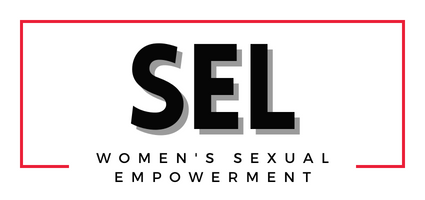You are likely more than familiar with sexual dysfunction in men. The minute a dick can’t get hard the world hears about it and the medical community snaps into motion in an effort to find a cure. But did you know that Female Sexual Dysfunction is a real thing? If you’ve had a lackluster libido, experienced pain while having sex, or just can’t seem to get off, you may be suffering from Female Sexual Dysfunction.
Don’t freak out just yet. The good news is that there are incredible cutting-edge treatments available to women and vulva owners and they are helping us get our groove back.
Note: It’s recommended to consult with a healthcare provider or a qualified sexual health professional for an accurate diagnosis and appropriate treatment.
What is Female Sexual Dysfunction
Let’s back up for a moment and start with the basics. What is Female Sexual Dyfunction anyway?
Female sexual dysfunction (FSD) refers to a group of conditions or difficulties that affect women and people with vulva’s ability to experience sexual arousal, desire, sexual satisfaction, or orgasm. It encompasses a range of sexual problems that can have physical, psychological, or relational causes.
It’s important to note that female sexual dysfunction can have multiple causes, including physical factors (hormonal imbalances, chronic health conditions, medication side effects), psychological factors (stress, anxiety, depression, body image issues), relationship problems, or a combination of these factors. Additionally, Female Sexual Dysfunction is not limited to menopausal women. It can occur at any age or stage of a woman’s life.
From counseling to new cutting-edge non-invasive treatment options, there are a number of little known solutions for female sexual dysfunction that you owe it to yourself to stay informed about.
Common types of female sexual dysfunction:
- Female sexual interest/arousal disorder: This condition involves a lack of sexual interest or arousal (aka low libido), leading to reduced sexual desire and difficulty in becoming sexually aroused or maintaining arousal during sexual activity.
- Female orgasmic disorder: It refers to difficulty or inability to achieve orgasm, despite adequate sexual stimulation and desire. Some women may experience delayed orgasms, weak orgasms, or anorgasmia (complete absence of orgasm).
- Genito-pelvic pain/penetration disorder: This condition involves recurrent pain or discomfort during vaginal penetration, making sexual intercourse difficult or impossible. It can include conditions such as vaginismus (involuntary muscle spasms of the vaginal wall) or dyspareunia (persistent pain during intercourse).
- Sexual aversion disorder: This disorder is characterized by a strong aversion or avoidance of any sexual contact or activity. It may be associated with deep-seated fears, trauma, or negative emotional responses towards sexual experiences.
Treatment Options for Female Sexual Dysfunction
While some of the treatments for Female Sexual Dysfunction may be familiar to you, there are some new cutting edge options that you need to check out.
Cliovana
Dr. Dr. Julianne Arena, MD, FACOG, ABAARM of Waves of Awakening suggests Cliovana as a treatment for women who are struggling to orgasm. Cliovana is a non-invasive treatment that aims to improve sexual satisfaction and address sexual dysfunction in women and people with vulvas. It utilizes soundwave therapy, known as low-intensity extracorporeal shockwave therapy (LI-ESWT), to stimulate blood flow and nerve tissue in the clitoral area. The treatment is designed to enhance sexual response and increase sensitivity. That means it increases your sexual desire, sexual pleasure, and helps you have more explosive orgasms!
Listen to what she has to say about it during my Locker Room Talk & Shots Podcast interview:
MonaLisa Touch
Dr. Karen Toubi OB/GYN at Rodeo Drive Women’s Health Center suggests the MonaLisa for vaginal dryness. The MonaLisa Touch laser is a vaginal rejuvenation treatment that utilizes fractional CO2 laser technology. It is primarily used for addressing vaginal dryness, pain during intercourse (dyspareunia), and other symptoms associated with genitourinary syndrome of menopause (GSM). The laser promotes collagen production and tissue regeneration in the vaginal area, improving lubrication, elasticity, and overall vaginal health. It also improves sexual function by reducing discomfort and restoring normal physiological conditions.
Dr. Karen Toubi talks about the MonaLisa in this Locker Room Talk & Shots episode:
Hormone therapy
Hormonal imbalances, such as low estrogen levels, can contribute to sexual dysfunction. Hormone replacement therapy (HRT) or local estrogen treatments may be prescribed to restore hormonal balance and alleviate symptoms.
Psychological counseling
Sexual dysfunction can have psychological roots, such as anxiety, stress, or relationship issues. Psychotherapy or counseling sessions can help address these underlying factors and improve sexual well-being.
Pelvic floor therapy
Pelvic floor exercises, also known as Kegel exercises, can strengthen the pelvic floor muscles, improve blood flow, and enhance sexual function. In some cases, biofeedback techniques or electrical stimulation may be used during pelvic floor therapy.
Medications
Certain medications, such as those targeting libido or arousal, may be prescribed to women experiencing specific sexual dysfunctions. However, it’s crucial to consult with a healthcare professional to determine the suitability and potential side effects of such medications.
Remember, the effectiveness of these treatments can vary depending on individual circumstances, and it’s important to discuss your symptoms and concerns with a healthcare provider to receive appropriate guidance and personalized recommendations.










